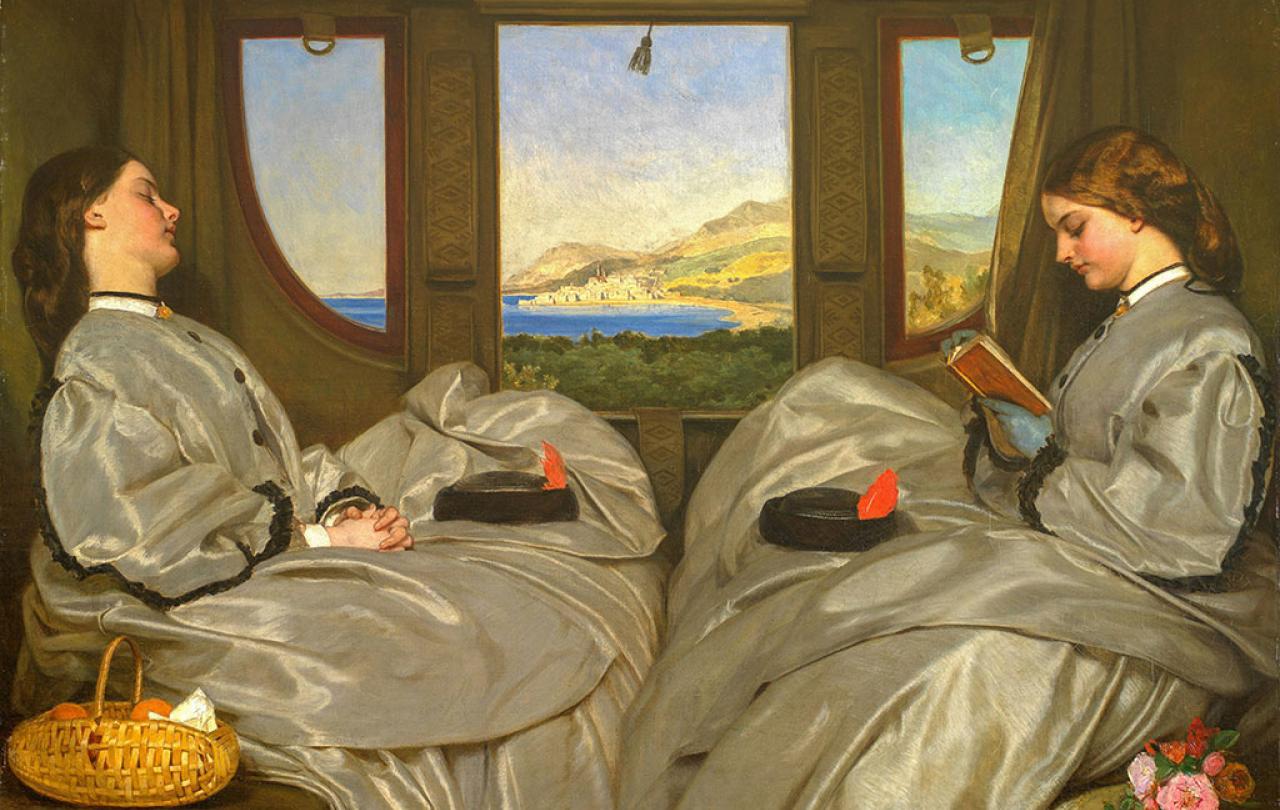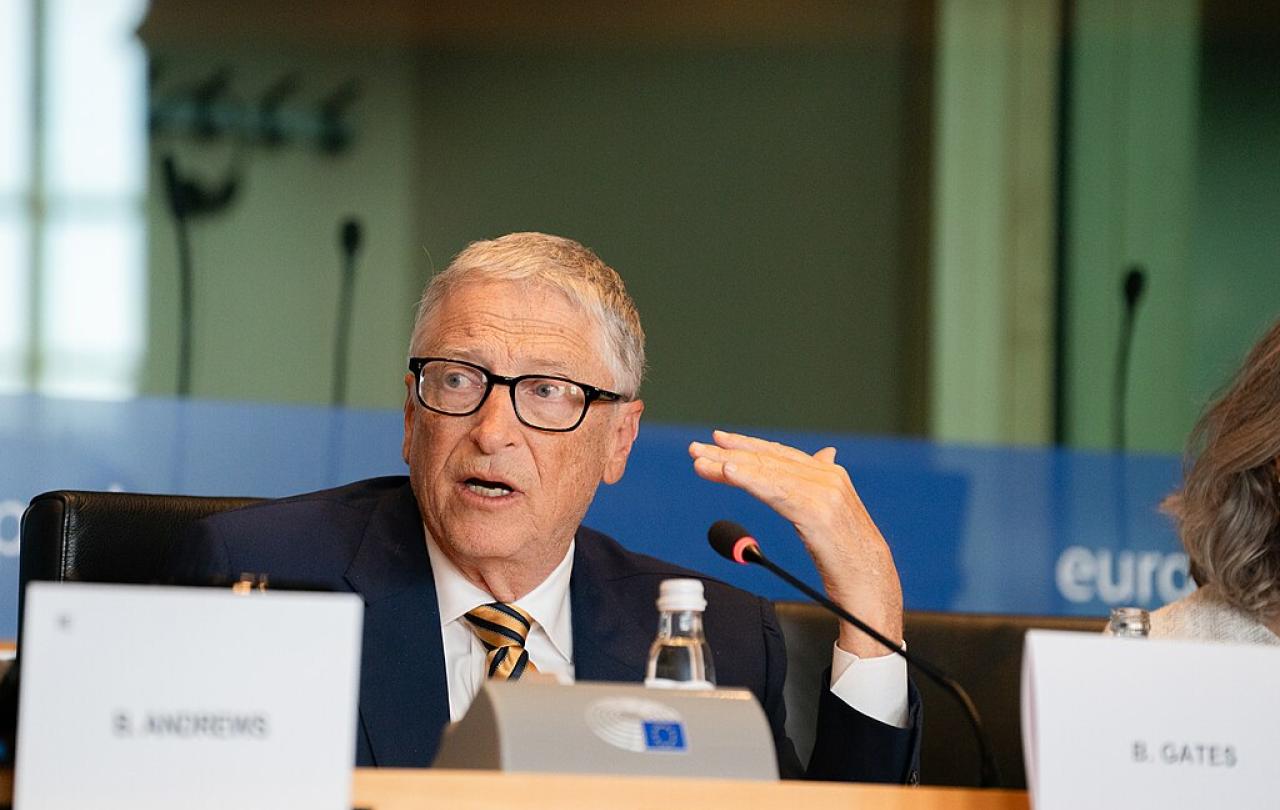
Even ordinary days seem to have frantic edges. A friend of mine, a salesman and father of four teenagers, said the other day that it felt like he was the hamster in the wheel, but so dreadfully exhausted, he’s flopped over, thumping around as the wheel keeps spinning. If we put a finger on the pulse of our current cultural desires, one pulse would be the longing not only for rest — spots of digital fasting or a day hiking — but an overhaul and renewal of what we’ve done with time. Yet it is difficult to know how to slow down, and it often seems that our attempts for self-care and being intentional are not enough to register that desired sense of slowness.
If we managed this, we would not just be able to slow down, but we would figure out how to bring our experience — the texture, the feel — of our paced lives into something like healing. The rush and tumble of a normal day nearly squeezes the life out of the clock’s second hand, and far too often, most of us reach each evening in some state of exhaustion.
Speaking from my own story, a shift happened when we moved from Los Angeles (which was, to be fair, a great place for us until it wasn’t) to East Clare in the Midlands of Ireland. It was a shift that my whole being needed—needed at a limbic and somatic level, in the spiritual self, as an artist, for family dynamics, and for my partner, a sense of freedom in work. It wasn’t that we merely got more time in our day: it was that our immersion in time, our soul’s experience of the clock, found an ‘easing up’ that — though the daily round is still arduous enough — afforded a little more time in every direction to breathe, think, walk, write; be.
It’s been in the wake of this move, nearly eight years ago now, that I’ve pondered why it felt that the hills here gathered me up into their arms and helped me to actually slow down. Is it these hills, the lovely stretches of variant greens and the countless walking paths hidden among them? Is it the congregation of artists — local artists, who refashioned my ideas about artistic success, inculcated as I was into seeing it as only with a large following? Is it the deliberate decisions to keep family overheads as low as we can, freeing up a bit of time from the understandable and ongoing need for wages?
Among the many reasons for the shift in how I experience time — for the sense, not just of slowing down, but of time affording more space — is the grace of reading with others.
The pastor, physician, and poet—this trio of us still are surprised by the deep, serendipitous connections that our poems make, week after week.
In fact, before this shift there was the keenly disappointing realisation of how little time in the land of adulthood could be set aside for reading. In the last few years, though, the regular habit of reading in companionship has grown into one of the most structural elements of my week. With Monday evening comes lectio divina, an ancient Christian practice for reading scripture in an authentically ‘listening’ way. Two lovely pals from town and I meet (often over a WhatsApp call, but sometimes in person) to read together a passage from the Bible, usually what will be read at a service the following Sunday.
On Monday night, my brother in Texas and I unpack whatever book we’re reading at the moment. We started with Tom Stoppard’s Arcadia, went onto Michael Foley’s School of Life book on Henri Bergson, and after a few more texts, are now reading the stunning poetry collection The Art of the Lathe by the Texan-Kansan poet B.H. Fairchild.
On Tuesday nights, I gather via Zoom with two other women—a minister in Connecticut and a doctor in Sydney; we met at an online course about Rilke in the winter of 2021, and still meet regularly, each bringing a poem to share and the stories of our lives as we’re living through the week. The pastor, physician, and poet—this trio of us still is surprised by the deep, serendipitous connections that our poems make, week after week.
I think too what happens in this reading companionship is that the muscles we use to attend to words together are the very muscles needed to read our own lives.
As these fellow readers and I weave together silence and articulation, listening and exploration, our time together edges eternity. In this, I think I glimpse how God works to redeem the violence we do to time. When we enter into the invitation to holy spaces—like time spent with the Bible, times in prayer, times of friendship—our usage of clock time becomes secondary to the content within that duration, and certainly secondary to the presence of others (be it the writer of the Gospel of John, Emily Dickinson, the Holy Spirit, or a friend down the road). Our experience of time becomes inflected by the psychological richness and the interplay of spiritual growth with another person or persons.
I think too what happens in this reading companionship is that the muscles we use to attend to words together are the very muscles needed to read our own lives. In this, we can suss out how the longing for slowness is an appropriate one and one to listen to. Using metaphors at hand, reading our lives with the modalities of dialogue, listening, and in-time discovery means that our longing for slowness can help us see that we’re looking for a waypoint, a stop along the road; or a few days at basecamp, patching up and cleaning worn gear; or a longer stretch of wintering in the plains before crossing the mountains; or a period of convalescence in a home by the sea. These images for rest, for pause and restoration, can help us see how to open to God’s care in our living narratives, care that seeks to renew and redeem our often grueling experience of time.
The special grace that reading companionship yields is not just the hour’s content that is spent in shared conversation, though this is nourishing and transformative in its own right. It is how this hour sets the context for all the other hours. The humble stance of reading with attention and cherishing the voices of others models a kind of immersed slowness for the rest of our personhood. At the end of the day, I think it’s a radical counterpoint to what we often ask of a day, an infusion of divine grace into the pumping vessels of time.





